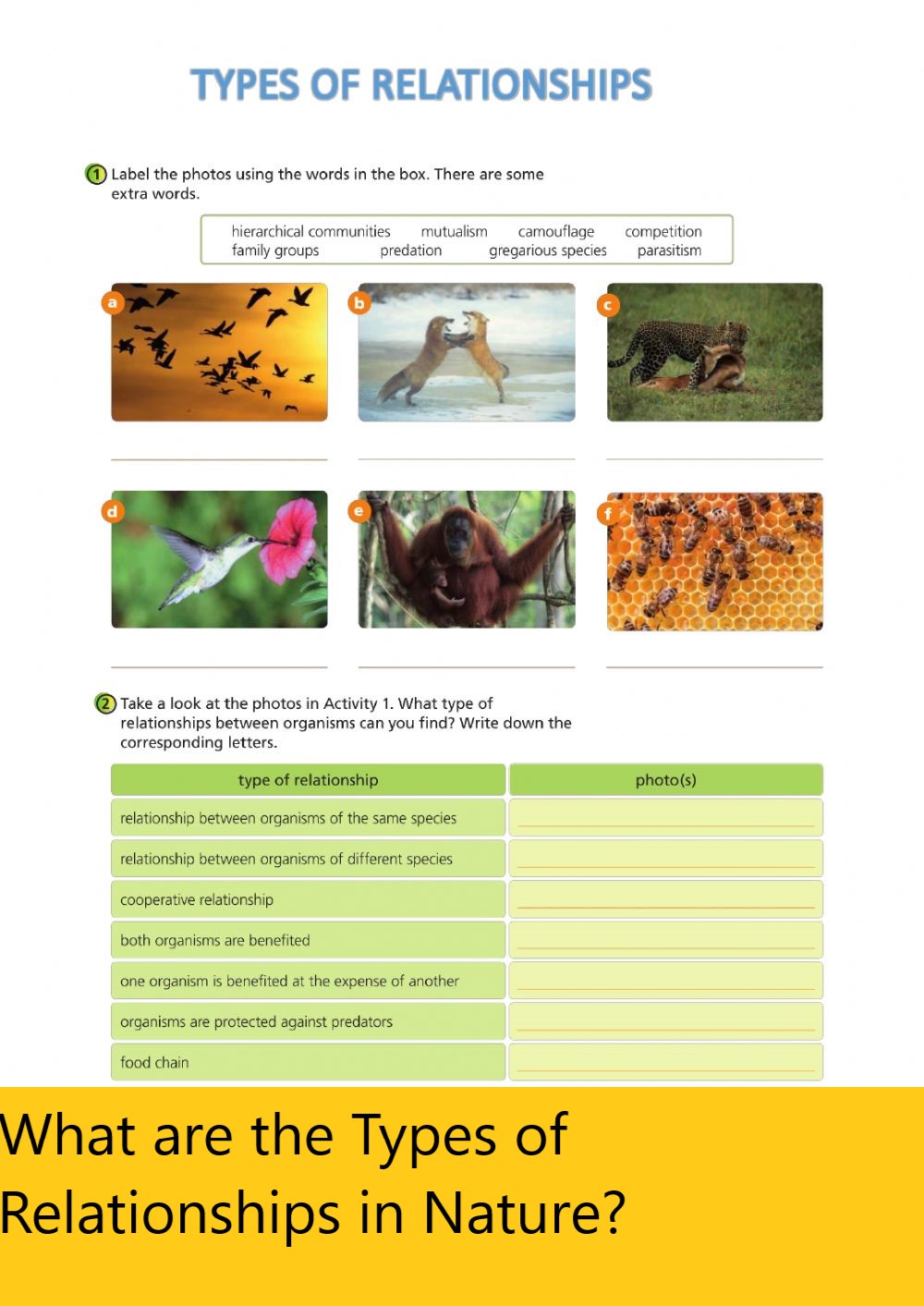Natural balance
What are the Types of Relationships in Nature? – Nature is held in perfect balance. All organisms play an important role in supporting this balance. These organisms relate to each other in many ways that help them survive. If these relationships are harmed, the entire ecosystem may be destroyed or changed. So, it is necessary to understand that every organism, no matter how big or small, is a valuable member of nature. Organisms form relationships with each other in many different ways, based on their needs and the environment they share.
Relationships in nature
Many organisms in nature find ways to use other organisms for their own survival. But unlike movies with a happy ending, these relationships do not always work out well for both parties involved.
Thanks to Darwin’s principle of “survival of the fittest,” many organisms have to put their own gain over the well-being of the other organism. If this were the case all the time, the disadvantaged organisms would die out. Nature has ways to prevent this from happening, by creating different relationships to strengthen the balance.
There are seven types of relationships in nature:
1. Symbiosis
2. Mutualism
3. Predation
4. Competition
5. Commensalism
6. Amensalism
7. Parasitism
Symbiosis
Symbiosis is a relationship in which both parties are benefited and the organisms live in close contact. A well-known example of symbiosis is seen in lichens. Lichens are made up of algae and fungi. The fungus provides the habitat, while the algae provide food. This way, both organisms benefit from each other . When they continue to interact, they change each other over time. This is called coevolution.
Mutualism
Mutualism is a relationship in which both organisms profit. It is a type of symbiosis. We see examples of mutualism in the human body, between humans and gut bacteria. The human gut is a perfect environment for these bacteria to grow. In return, the bacteria protect humans against diseases , and E. coli generate vitamins B12 and K.
Clownfish and sea anemone also an example of mutualism. Sea anemones have stinging cells that keep the fish safe, while the fish help the anemone by removing organisms that harm them.
Predation
Predation is a relationship in which one organism kills and eats the other. Here, the predator benefits while the prey is harmed. Predation is one of the more common relationships found in the world. A lion killing a buffalo is an example of predation. In this case, the lion is the predator and the buffalo is the prey.
Read More : Salvabrani.com

Competition
Competition is when organisms fight for the same food, space, or materials. Competition can be between organisms of different species or between organisms of the same species. Here, both parties lose.
An example of competition is seen between corals and sponges. Sponges live in corals. But, if sponges compete against corals for food and win, the corals die. If the corals die, the sponges no longer have a place to live. In this way, both organisms lose.
Commensalism
Commensalism is a type of relationship in which one party benefits while the other party is neutral. Barnacles found on whales are an example of commensalism. The barnacle stuck to the whale is safe from harm, moves to new places and finds food, but its presence has no effect on the whale.
The relationship between cattle and cattle egrets is also one of commensalism. Cattle disturb insects while grazing and cause them to fly out of the grass. These insects are then eaten by cattle egrets. The egrets are fed, and their actions have no effect on the cattle.
Amensalism
Amensalism is a type of relationship in which one party is harmed while the other is neutral. An example is when elephants walk across a grassland. The grass is crushed, but the elephants are not affected.
The roots of the black walnut secrete a substance, juglone, which prevents other plants from growing nearby. This reduces competition for space and nutrients. The walnut tree is unaffected but surrounding plants are harmed.
Parasitism
Parasitism is a relationship in which one party benefits while the other is harmed. The organism that benefits is called the parasite and the organism that is harmed is called the host. The parasite lives on or within and gets food and nutrients from the host. Parasites behave in this way because they cannot find food and nutrition on their own, and so they depend on the host. Ticks are common parasites found on animals. They pierce the skin of the animal and suck its blood.

